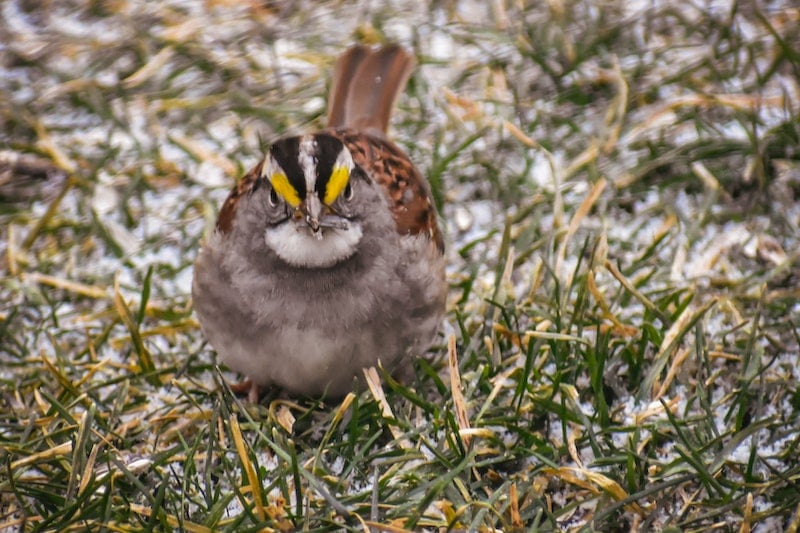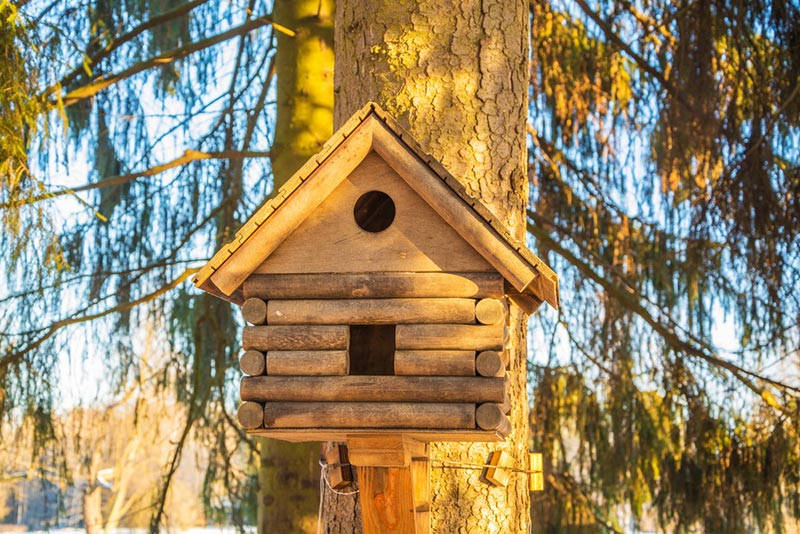Yellow-Browed Sparrow: Field Guide, Pictures, Habitat & Info
Last Updated on

Sparrows are among the most diverse and widespread groups of birds in the world, with more than 140 species found in almost every region. The Yellow-Browed Sparrow is a relatively new addition to the group, described in 1825 by Johann Baptist von Spix.
It belongs to the Passerellidae family. The family comprises species of American Sparrows, Snow Buntings, Chipping Sparrows, Dark-Eyed Juncos, and Longspurs. Here’s a more detailed description of the Yellow-Browed Sparrow and its habitat.

Quick Facts About Yellow-Browed Sparrows
| Habitat: | Amazon Basin |
| Diet: | Seeds and insects |
| Behavior: | Less secretive than similar species |
| Nesting: | Cup nests made of fine plant material and dried grass |
| Conservation: | Species of least concern |
| Scientific name: | Ammodramus aurifrons |
| Lifespan: | 3 years |
General Description

The Yellow-Browed Sparrow is mainly found in the Amazon basin. The habitat comprises lowland rainforests, humid scrublands, and gallery forests.
These sparrows are small in stature, measuring 5 inches in length. Their weight ranges from 14.5 grams to 19 grams.
Both sexes have similar plumage (feathers), although females tend to be smaller than males. Adult Yellow-Browed Sparrows have brown-gray upper parts. Their backs have dusty streaks that make them recognizable. Unlike the adults, the young Yellow-Browed Sparrow has no yellow on its wings or face.
Johann Baptist von Spix was the first person to describe a Yellow-Browed Sparrow. Initially, he thought the sparrow was a tanager. So, he put it in the Tanagra genus. However, the Yellow-Browed Sparrows were later moved to the Myospiza genus. It was a new genus that Robert Ridgway created to classify grassland sparrows.
DNA analysis of the Yellow-Browed Sparrows has shown that the species is closely related to the grassland sparrow. They are sister species, forming a sister group with grasshopper sparrows.
These three sparrows are different from other sparrows in the Ammodramus genus, which now contains the Myospiza genus. There are four subspecies of the Yellow-Browed Sparrow. The subspecies differ based on the amount of yellow on their face. The streaking on their crown and upper part also varies.
Range, Habitat, Behavior, Diet & Nesting

As mentioned earlier, Yellow-Browed Sparrows share their habitat and behavior with grassland sparrows. Here is some must-know information about them:
Range
A bird’s range is the area where it is commonly found. The Yellow-Browed Sparrow’s breeding range extends across Amazonia. In addition, it has a range of up to 1,800 meters along the Andes foothill.
Habitat
In the past, the Yellow-Browed Sparrow lived along islands and rivers. However, now it has moved to the grasslands in the Amazon biome. You can find Yellow-Browed Sparrows on roadsides and in agricultural fields. They are also a common sight around towns.
Behavior
While most other sister species are secretive and hard to spot, the Yellow-Browed Sparrow is quite the opposite. It is often seen in the open, foraging on the ground.
The Yellow-Browed Sparrow has a high-pitched song that sounds like an insect. Males sing all day long, perching on a low branch. You will see them chasing each other in quick chases or long pursuits when they are not singing or eating. Yellow-Browed Sparrows breed from February to September.
The female Yellow-Browed Sparrow lays two to three white eggs. During the incubation period, both parents take care of the young ones.
Diet
Yellow-Browed Sparrows are granivorous. It means that the bulk of their diet comprises seeds. However, they are also known to eat small insects. Therefore, you will often see them foraging on the ground, looking for food.
They can also eat insect larvae. The larvae are an essential source of protein for the Yellow-Browed Sparrow, especially during the breeding season.
Nesting
Yellow-Browed Sparrows build their nests on the ground, among the grass. The female Yellow-Browed Sparrow builds the nest, a simple cup of grass. The nest is made using fine plant material and dried grass.

How to Find Yellow-Browed Sparrows: Birdwatching Tips

Since Yellow-Browed Sparrows aren’t secretive, you have a good chance of finding them if you know where to look. Here are some tips:
What to Listen For
Like every other bird, the Yellow-Browed Sparrows also have a song you can listen to. Once you know what it sounds like, you can identify them even when they’re hidden in the leaves.
The first note of their song is always lower in pitch than the rest. After that, the pitch gradually increases until the last note, which is always higher.
Males typically sing all day long. You’ll find them perched on exposed and low branches.
What to Look For
Besides their song, another way to identify Yellow-Browed Sparrows is by their physical appearance. Here are some things to look for:
- They have a bright yellow stripe above their eyes.
- Their upper parts are grayish brown, and their underparts are pale white.
- They have two white wing bars.
- Their tail is long and notched.
- These birds are small, measuring only 4–5 inches.
When to Look
You can find Yellow-Browed Sparrows all year round since they now live near towns and cities. But if you want to see them in their natural habitat, you should go birdwatching during the spring and summer.
They breed in the boreal forests and spend winters in the southern region. So, if you’re in the right place at the right time, you might see them nesting.
Attracting Yellow-Browed Sparrow to Your Backyard: Tips & Tricks

Yellow-Browed Sparrows are a delight to watch as they flit around searching for food. If you’re hoping to attract them to your backyard, there are a few things you can do:
- Since the birds like to eat seeds and insect larvae, you can try scattering some sunflower seeds or mealworms around your yard.
- You can also put up a birdfeeder filled with nyjer seed, a type of thistle seed that Yellow-Browed Sparrows love.
- Keep your birdfeeder clean and regularly fill it with fresh seeds.
- You can also try planting native plants in your yard, as the Yellow-Browed Sparrows love to nest in them. Some good plants include blackberry, blueberry, dogwood, and holly.
Yellow-Browed Sparrow Conservation: Is This Bird Threatened?
The Yellow-Browed Sparrow has a stable population and occupies an extensive range. Due to this, it is a species of the least concern per the International Union for Conservation of Nature.
A species of least concern is a species that has been categorized by the IUCN as not being critically endangered, endangered, or vulnerable. The Yellow-Browed Sparrow is not considered threatened at this time.
In fact, rainforest clearing for agricultural purposes has boosted the population of the Yellow-Browed Sparrow in recent years as the bird can adapt to secondary-growth habitats. As a result, the species like to take residence in early successional agricultural fields.

Final Thoughts
The Yellow-Browed Sparrow is a fairly small bird with a light brown back and wings and a cream-colored belly. The sparrow has a yellow stripe that gives it its name, running from its beak, across its forehead, and over its eyes.
The natural habitat of a Yellow-Browed Sparrow is grasslands and open woodlands. It feeds on insects and seeds. To attract a Yellow-Browed Sparrow to your backyard, put out a bird feeder with seeds or insect larvae.
Featured Image Credit: Chris F, Pexels
Table of Contents
About the Author Jeff Weishaupt
Jeff is a tech professional by day, writer, and amateur photographer by night. He's had the privilege of leading software teams for startups to the Fortune 100 over the past two decades. He currently works in the data privacy space. Jeff's amateur photography interests started in 2008 when he got his first DSLR camera, the Canon Rebel. Since then, he's taken tens of thousands of photos. His favorite handheld camera these days is his Google Pixel 6 XL. He loves taking photos of nature and his kids. In 2016, he bought his first drone, the Mavic Pro. Taking photos from the air is an amazing perspective, and he loves to take his drone while traveling.
Related Articles:
10 Types of Hummingbirds in Arkansas (With Pictures)
8 Types of Hummingbirds in Nebraska (With Pictures)
5 Types of Hummingbirds in Idaho (With Pictures)
3 Types of Hummingbirds in Mississippi (With Pictures)
8 Types of Hummingbirds in Kansas (With Pictures)
5 Types of Hummingbirds in West Virginia (With Pictures)
5 Types of Hummingbirds in Ohio (With Pictures)
Where Do Nuthatches Nest? Nuthatch Nesting Habits Explained
